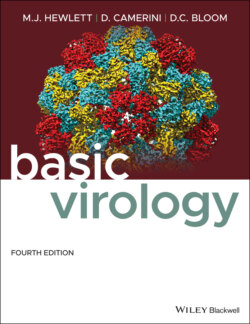Читать книгу Basic Virology - Martinez J. Hewlett - Страница 65
Infection of an “accidental” target tissue leading to permanent damage despite efficient clearing
ОглавлениеAs outlined in Figure 4.2, some viruses can target and damage an organ or organ system in such a way that recovery from infection does not lead to the infected individual regaining full health despite generation of good immunity. A well‐understood example is paralytic poliomyelitis. Poliovirus is a small enteric virus with an RNA genome (a picornavirus), and most infections (caused by ingestion of fecal contamination from an infected individual) are localized to the small intestine. Infections are often asymptomatic, but can lead to mild enteritis and diarrhea. The virus is introduced into the immune system by interaction with lymphatic tissue in the gut, and an effective immune response is mounted, leading to protection against reinfection.
Infection with poliovirus, however, can also lead to paralytic polio. The cellular surface protein to which the virus must bind for cellular entry (CD155) is found only on cells of the small intestine and on motor neurons. In rare instances, infection with a specific genotype that displays marked tropism for (a propensity to infect) neurons (i.e., a neurovirulent strain) leads to a situation where virus infects motor neurons and destroys them. In such a situation, destruction of the neurons leads to paralysis.
It should be noted that paralysis resulting from neuronal infection does not aid the virus's spread among individuals; this paralytic outcome is a “dead end.” Perhaps ironically, the paralytic complications of poliovirus infections have had negative selective advantages, since if such a dramatic outcome did not occur, there would have been no interest in developing a vaccine against poliovirus infection!
A variation on the theme of accidental destruction of neuronal targets by an otherwise relatively benign course of acute virus infection can be seen in rubella. This disease (also called German measles), which is caused by an RNA virus, is a mild (often asymptomatic) infection resulting in a slight rash. Although infection is mild in an immunocompetent individual, the virus has a strong tropism for replicating and differentiating neural tissue. Therefore, women in the first trimester of pregnancy who are infected with rubella have a very high probability of having an infant with severe neurological damage from congenital rubella syndrome. Rubella is rare in the United States due to high acceptance of the vaccine, but vaccination of women who are planning to become pregnant is an effective method of preventing such damage during localized rubella epidemics in other parts of the world.
